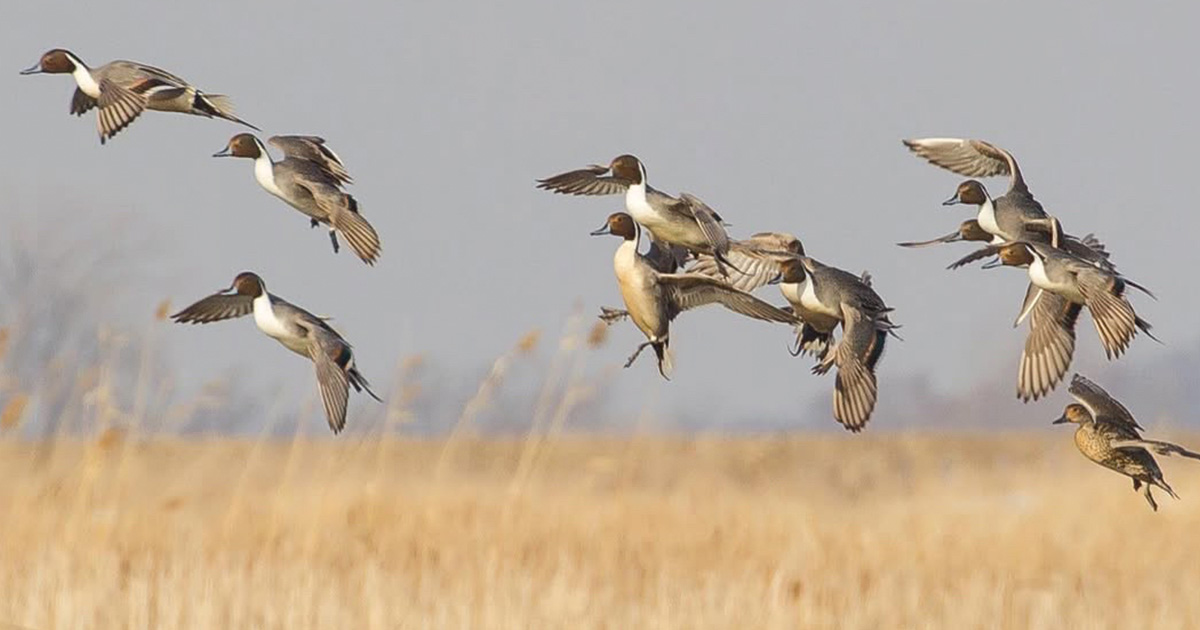Migration Alert: California Hunters Dealing with Difficult Conditions
Nov. 21, 2025 – Pacific Flyway – California
Nov. 21, 2025 – Pacific Flyway – California

The November doldrums are typical for California, but for many, the duck hunting has been the worst in memory. As a result, there are fewer hunters going afield. Heavy rain dumped upwards of three inches in the Central Valley on November 13‒15, which could have shaken things up for some hunters. It did change the habitat, but not for the better. The few birds in the Golden State suddenly found unlimited new habitat and spread out, from foothill farm ponds to acres of sheet water.
Temperatures have been mild too. The Klamath Basin—home of our nation's first waterfowl refuge designated by President Theodore Roosevelt in 1908—has adequate water for the first time in many years. The basin, to include Lower Klamath and Tulelake National Wildlife Refuges, hasn’t come close to freezing, so the birds that are present are sitting tight.
Hunting is slow in Tulelake Sump 1-B. A veteran guide I spoke to hunted on Monday, Nov. 17, and shot two wigeon. That was it. Reports claim birds are sticking to the open water and avoiding the dense tules.
Nearby Ash Creek Wildlife Area, a state-run facility, is yielding the top averages in the state, with mallards topping the bag.
Even the state’s most prominent species, the green-winged teal, is in short supply up and down the 800-mile-long state. In southern areas, from Kern NWR to San Jacinto and Wister, cinnamon teal are more numerous but few are being harvested.
Another decent option is Honey Lake Wildlife Area near Susanville, where hunters will find ample water, some mallard shooting, and little pressure.
Private clubs in the legendary Butte Sink near Gridley are anything but scintillating now, with a shortage of mallards and very few limits. Some clubs barely tallied a duck of any kind. Gray Lodge Wildlife Area is fully flooded for the first time in years, but the hunting reports are poor.
The Sacramento National Wildlife Refuge Complex at Willows—including Colusa, Delevan, Sacramento, and Sutter—are attracting few hunters. Much of the habitat is still dry. Those that persevere have scored some of the larger species, northern pintails and gadwalls.
Private clubs and the Yolo Bypass Wildlife Area are forced to settle for shovelers and little else. Just to the south, the Delta islands at the confluence of the Sacramento and San Joaquin Rivers are holding very few ducks, topped by local mallards and wood ducks, with an occasional flurry of northern pintails. Most numerous species in the islands are Aleutian Canada geese, particularly on the Empire Tract and Venice Island.
On windy days, the Suisun Marsh is yielding limits of northern pintails, plus the usual wigeon and shovelers. On quiet, “bluebird days,” hunting is very slow.
The 240,000-acre Grasslands Ecological Area—the largest wetland complex in the entire West—was disappointing for hunters on the October 18 opener. Green-winged teal were the number one bird harvested for a couple of weeks, but now shovelers are the only species readily available.
Pheasant hunting is open, and the population appears to have made a strong comeback this year, especially at Yolo Wildlife Area near Sacramento and the state and federal refuges in the Sacramento Valley.
California hunters will have to wait until the next major storm system to mix things up as we head into the holiday season.
Stay up to date with the latest migration information.
Ducks Unlimited uses cookies to enhance your browsing experience, optimize site functionality, analyze traffic, and deliver personalized advertising through third parties. By continuing to use this site, you agree to our use of cookies. View Privacy Policy